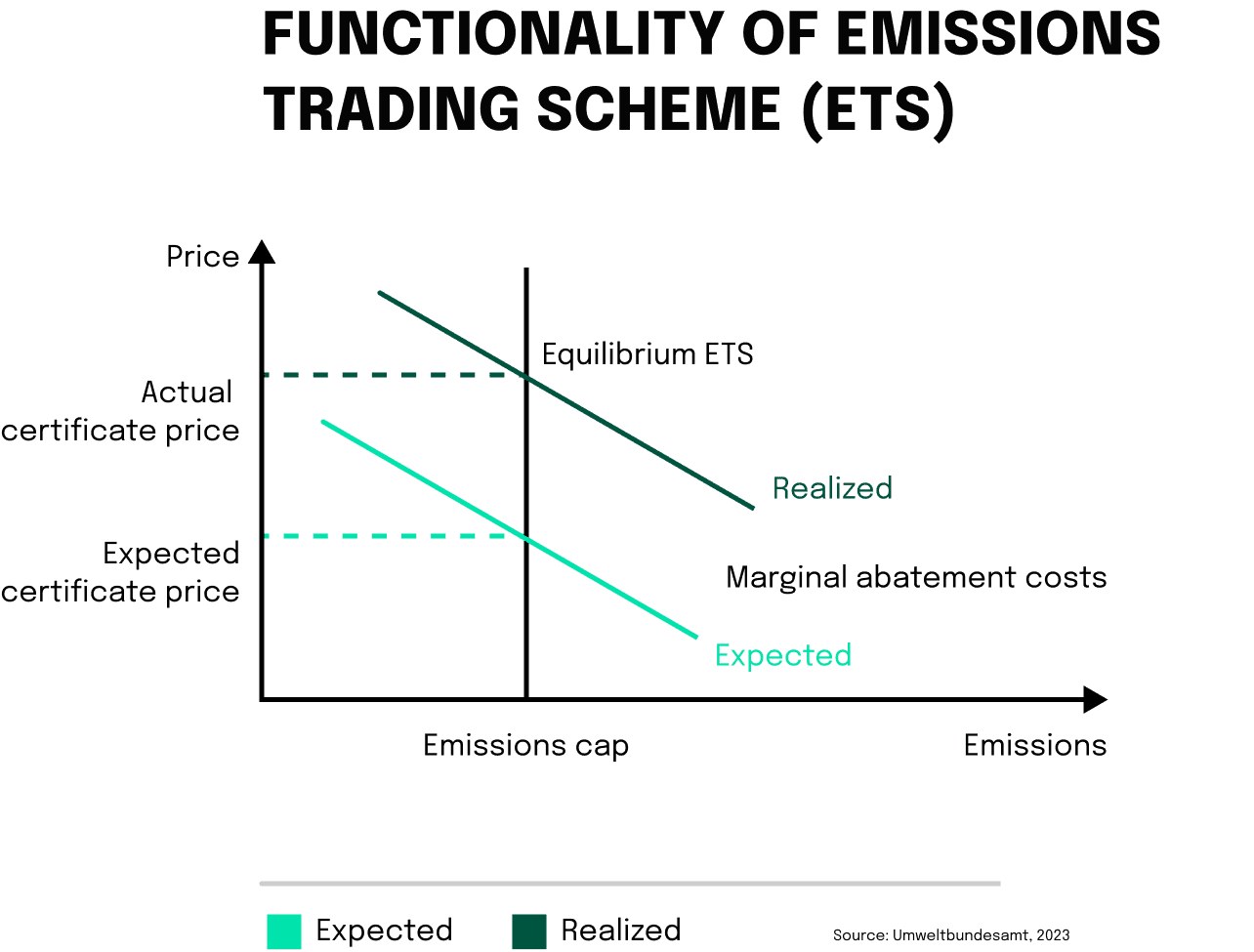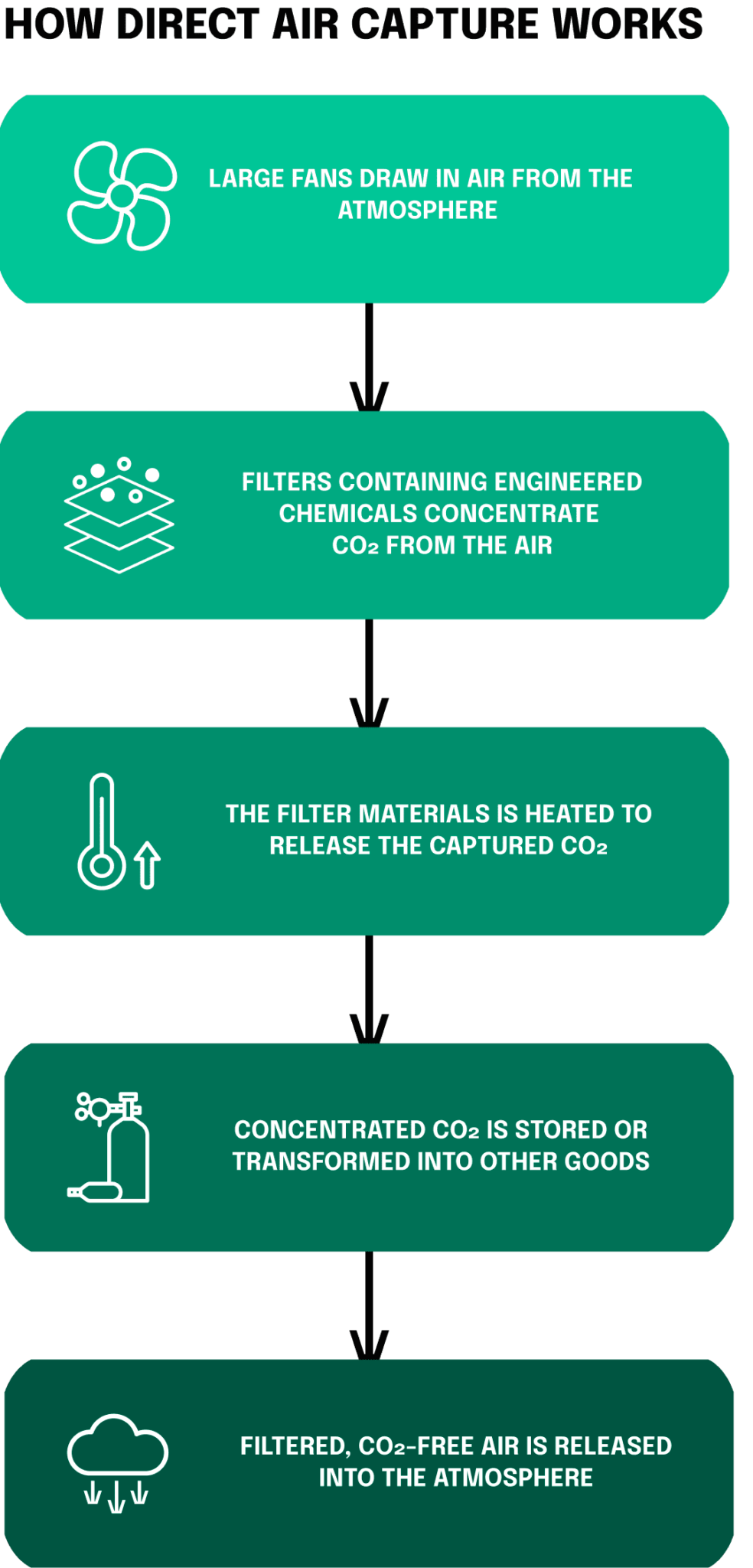20 min reading time
Navigating the Carbon Jungle: Unraveling the World of CO₂ Certifications

Welcome to the carbon jungle! As climate change continues to dominate headlines and reshape our world, sustainable finance has emerged as a critical tool in the fight against global warming. By integrating environmental, social, and governance (ESG) factors into financial decision-making, businesses, and investors can drive positive change and contribute to a more sustainable future.
Enter CO₂ certifications, another critical tool of sustainable finance. These certifications play a vital role in combating climate change by helping companies and investors measure, manage, and offset their carbon emissions.
The basics of CO₂ certifications
The topic of CO₂ certifications started with the implementation of the Emissions Trading Scheme in the EU. An Emissions Trading Scheme (ETS), also known as “cap and trade,” is a market-based policy tool used to reduce greenhouse gas emissions. In an ETS, the regulator sets a cap on the total amount of emissions allowed in a given period and then issues a limited number of emission certificates or allowances that correspond to that cap.
If a company emits less than its allocated number of certificates, it can sell its excess certificates to other companies that require them. If a company emits less than the number of certificates allocated to it, it can sell its surplus certificates to other companies that need them. The ETS is relevant for companies operating within the European Union and in certain energy-intensive sectors. These include, for example, power generation, oil refining, steel production, cement manufacturing, glass and ceramics industry, and the chemical industry. Companies operating in these sectors must participate in the EU ETS, regardless of their size. Companies that operate installations emitting less than 25,000 tons of CO₂ equivalent per year and have a rated thermal input of fewer than 35 megawatts can benefit from simplified obligations. In some cases, very small emitters that emit less than 2,500 tons of CO₂ per year may be exempt from participating in the EU ETS if they commit to implementing alternative emission reduction measures.
The total quantity of certificates issued by the regulator determines the total amount of emissions allowed within a given period. Over time, the regulator can lower the cap and reduce the number of available certificates in order to encourage further emission reductions.
The overall number of certificates, also known as the “limit,” sets the maximum allowed emissions for a year. Certificates are distributed through auctions or at no cost based on historical standards. Companies can exchange these certificates, and their value is determined by supply and demand dynamics. A company’s choice to purchase or sell certificates is influenced by the expenses associated with reducing emissions. If reducing emissions is more cost-effective than buying certificates, the company will do so and trade any extra certificates at the current market rate.
In emissions trading schemes, the availability of certificates is fixed. As a result, the market equalizes supply and demand by adjusting prices. If the cost of reducing emissions is higher than anticipated, the price of certificates may rise, resulting in increased costs for businesses and consumers. Conversely, if there is a lower demand for certificates, the prices will decrease.

If businesses and individuals believe that the prices of certificates will remain low over time, they may be less inclined to invest in innovative technologies, which could lead to increased costs for emissions reduction in the future. Furthermore, the cap on emissions implies that additional policies or voluntary actions, such as upgrading oil-fired heating systems or implementing energy conservation measures, will not have a direct impact on the environment. Instead, they will merely shift emissions to other locations or times, as the total number of permits remains constant. Carbon pricing will just not be enough to fuel the transition to a low-carbon economy!
What are CO₂ certifications?
As the ETS is clearly flawed – more downfalls are visible here – there are alternatives that gained in popularity in the last years. Thousands of companies around the world have been able to announce both large and small climate success stories thanks to CO₂ certificates. The Walt Disney Company, for example, has claimed triumphantly that it has slashed its emissions by half since 2012. Gucci has announced that its operations are completely climate neutral. As have McKinsey, Netflix, and Zalando. But how does this actually work, and what are the benefits of these certifications?
CO₂ certificates, also known as carbon offset certificates, are tools designed to signify the decrease or elimination of a certain quantity of greenhouse gas emissions, typically measured in metric tons of CO₂ equivalent. When organizations, projects, or products achieve verified reductions or eliminations of their carbon emissions, these certificates are granted. Businesses can use these certificates to display their dedication to minimizing their carbon impact and combating climate change.
Does this sound too good to be true? The answer is not so straightforward. There are good arguments for the usage of CO₂ certifications, nonetheless, we do not want to neglect the potential downsides and associated reputational risk when relying on the wrong certifications. That’s exactly why we analyzed the risk factors and present them in the fourth section of the article. Keeping these factors in mind, while being guided by the EU Carbon Removal Certification Framework (CRCF) will help you in making the right decision when it comes to the selection of CO certifications.
How are CO₂ certifications created and regulated?
Certification of carbon dioxide removals involves verifying that a certain amount of carbon dioxide has been removed from the atmosphere and stored in a way that is permanent and measurable. This process typically involves third-party verification and certification schemes to ensure that the removals are real, additional, and permanent. Let’s examine this process one step at a time:
- Formulating standards and protocols: Certification bodies like the Verified Carbon Standard (VCS) or the Gold Standard create guidelines and methods for measuring, documenting, and verifying reductions or removals of greenhouse gas emissions.
- Project execution: Organizations, businesses, and even governments undertake projects aimed at reducing or removing carbon emissions, such as setting up renewable energy facilities, initiating reforestation efforts, or capturing methane.
- Verification and certification: Independent third-party evaluators examine projects to confirm their compliance with the appropriate standards and protocols. These evaluators authenticate the claims of carbon emissions reduction or removal made by those implementing the projects.
- Regulation and supervision: Governments and international organizations, like the United Nations Framework Convention on Climate Change (UNFCCC) and the European Union, establish a legal and regulatory framework for CO₂ certificates. They create guidelines, set up registries for monitoring certificates, and enforce regulations.
EU Carbon Removal Certification Framework (CRCF)
As we have just mentioned before, the process of creating credible carbon removal certifications is also heavily dependent on regulatory bodies. Now that you have a solid understanding of CO2 certifications let’s delve deeper into the EU Carbon Removal Certification Framework (CRCF). The CRCF, established by the European Commission, is a comprehensive system designed to provide transparent, robust, and science-based certification for carbon removal solutions within the European Union.
The primary objectives of the CRCF are to encourage investment in carbon removal projects, promote innovative carbon removal technologies, and support the European Union’s goal of achieving climate neutrality by 2050. The framework covers a wide range of carbon removal methods, including afforestation, reforestation, soil carbon sequestration, bioenergy with carbon capture and storage (BECCS), enhanced weathering, and direct air capture with storage. In the later stages of this article, we will take a closer look at the different carbon removal methods that are currently being used. Let’s shortly focus on the proposed regulation itself.What exactly are the steps proposed by the EU?
- Application submission: The operator of the carbon removal activity sends an application for certification to a certification body. This application should contain all pertinent information about the carbon removal activity.
- In-depth activity description and methodology used: The operator supplies a comprehensive description of the carbon removal activity and the certification methodology employed. This includes details on how carbon removals will be measured, monitored, and verified.
- Anticipated carbon removals and net carbon removal advantage: The operator records the expected carbon removals and the net carbon removal benefit. This data helps determine if the proposed activity fulfills the minimum requirements for EU-certified carbon removals.
- Certification audit: Assisted by the operator or a group of operators, the certification body performs a certification audit in the initial phase to verify the provided information and ensure compliance with the regulation’s quality criteria.
- Consultation services for smaller operators: If a group of operators submits the application, it should specify how consultation services are offered, particularly to small-scale carbon farming operators. This guarantees that all operators receive the necessary support.
- Certification decision: After reviewing the audit results, the certification body decides whether to grant a certificate for EU-certified carbon removals. If approved, this certificate verifies that all relevant requirements have been met.
The proposal also sets out requirements for third-party verification and certification of carbon removals, in order to harmonize the certification process and ensure environmental integrity. With the ultimate goal of creating high-quality certification with the following characteristics visible in the graphic below.

The impact of CO₂ certifications
In this section, we’ll explore three subtopics that demonstrate the positive impact of CO₂ certifications: driving the transition to a low-carbon economy, encouraging sustainable business practices, and enhancing accountability and transparency in emissions reporting.
Driving the transition to a low-carbon economy
CO₂ certifications play a crucial role in transitioning to a low-carbon economy. They create economic incentives for businesses and organizations to reduce their greenhouse gas emissions by assigning a monetary value to carbon reductions. This encourages the development and implementation of innovative low-carbon technologies, such as renewable energy, carbon capture and storage, and energy efficiency improvements.
A study conducted by Knutsson et al. analyzes the impact of both green certificates on the profitability of investments in new Combined Heat and Power (CHP) plants in the Swedish district heating sector. The introduction of has increased the profitability of CHP investments, making them more attractive for companies operating in the district heating (DH) sector. This has led to an increase in CHP generation and a reduction in CO₂ emissions. As a result, CO₂ certifications stimulate investment in cleaner technologies and contribute to the global effort to mitigate climate change.
Encouraging sustainable business practices
CO₂ certificates motivate companies to integrate sustainable practices within their operations. By obtaining these certificates, firms can exhibit their dedication to decreasing their carbon impact and reaching environmental objectives. This not only bolsters their reputation and brand image but also aids in attracting eco-aware customers and investors.
In addition, CO₂ certificates offer a structure for companies to assess, document, and verify their emissions reductions. This spurs them to constantly enhance their environmental performance and adopt leading practices in carbon management. Consequently, businesses with CO₂ certificates are more equipped to adapt to tighter emissions regulations, handle climate-related risks, and capitalize on opportunities within the expanding market for low-carbon products and services.
Enhancing accountability and transparency in emissions reporting
CO₂ certificates improve responsibility and openness in emissions reporting by laying out distinct guidelines and methods for measuring, recording, and verifying reductions or removals of greenhouse gas emissions. Independent evaluators scrutinize projects and authenticate emissions claims, guaranteeing that reported emissions data is precise, trustworthy, and consistent across various organizations and sectors.
This transparent reporting structure enables governments, investors, and consumers to monitor progress toward emissions reduction targets and hold organizations responsible for their environmental performance. It also helps prevent cases of “greenwashing,” where businesses falsely portray themselves as more eco-friendly than they truly are.
However, what we do need to mention is that there must be a clear differentiation between unnecessary compensation of carbon and “unavoidable” carbon that should be compensated with high-quality certifications in line with the characteristics mentioned above. The first step must always be to innovate and avoid large carbon emissions in general. Once this potential is fully realized, then you should think about compensating emissions with certifications. But how does the certification actually compensate for emissions? And which techniques are out there? These are two questions that we are going to answer in the next section.
A closer look at carbon removal techniques
We have talked about what CO₂ certifications are, and how they are created and regulated. Also, we already observed the positive impact these certifications can have. But what exactly is behind these certifications? How are carbon emissions eliminated? Let’s take a look!
Sowing seeds for tomorrow: Afforestation
Afforestation entails creating new forests on lands that have never been forested, or on lands that have experienced deforestation for an extended time. The tree types that are widely discussed are old growth vs young-growth forests. Old-growth forests are said to have massive carbon storage capabilities however these trees are capturing carbon incredibly slow to capture anymore. By developing new forests, afforestation aids in capturing carbon dioxide from the atmosphere, as trees absorb CO₂ through photosynthesis, storing it in their biomass and the surrounding soil.
Forest renaissance: Reforestation
Forests remove around three billion tons of carbon dioxide annually. Therefore, reforestation can decrease global warming. Reforestation involves the restoration of forests on lands that were previously forested but have been deforested due to human actions, such as logging or agricultural practices.
By replanting trees and rejuvenating ecosystems, reforestation contributes to carbon capture and helps boost biodiversity, offering crucial habitats for diverse plant and animal species. Impacts on temperature are affected by the forest location. Planting forest trees in tropical climates has more advantages over boreal regions. Tropical reforestation leads to clouds formation which by reflecting the sunlight cause a lowering in temperature.
Cultivating carbon storage: Soil carbon sequestration
Soil carbon sequestration captures and stores atmospheric carbon dioxide in the soil using various agricultural and land management practices. These practices include no-till farming, cover cropping, and enhanced grazing management. By increasing the organic matter content in the soil, these techniques augment the soil’s ability to store carbon, subsequently reducing greenhouse gas emissions. No-till farming even has more benefits than just storing carbon. All the benefits can be observed in the visual below:
Carbon capture meets bioenergy: BECCS
BECCS is a technology that combines the generation of bioenergy from biomass with carbon capture and storage. The carbon dioxide released during the combustion of biomass for energy generation is captured and stored underground, preventing its release into the atmosphere. This method results in net-negative emissions, as the biomass absorbs CO₂ while growing and then captures and stores the emitted CO₂ during energy generation.
Snatching carbon from the atmosphere: Direct air capture with storage (DACS)
DACS is a technology that captures CO₂ directly from the ambient air using chemical processes. Once captured, the CO₂ is compressed and stored underground in geological formations or utilized in various applications. DACS holds the potential to remove vast amounts of CO₂ from the atmosphere.

Let’s take a closer look at the process involved in DACS:
- Air intake: Ambient air, containing approximately 0.04% CO₂, is drawn into the DACS system using fans or other air-moving devices.
- CO₂ capture: The air is then passed through a specialized filter or a chemical absorbent, often called a “sorbent.” Sorbents can be liquid or solid. The CO₂ molecules in the air chemically bind to the sorbent, separating them from other gases in the atmosphere.
- Sorbent regeneration: Once the sorbent becomes saturated with CO₂, it is heated or exposed to a pressure or humidity change to release the captured CO₂. This process regenerates the sorbent, making it ready for another cycle of CO₂ capture.
- CO₂ storage or utilization: Compressed CO₂ can be stored underground in geological formations. Alternatively, the captured CO₂ can also be utilized in various other applications.
Discussing the downsides of CO₂ certifications
While CO₂ certifications have many benefits and can drive positive change, it’s important to acknowledge the potential risks and challenges associated with them.
The risk of greenwashing
Greenwashing refers to the practice of portraying products, services, or organizations as more environmentally friendly than they actually are. Some businesses may use CO₂ certifications to create a false impression of their commitment to sustainability without making substantial changes to their operations. This can mislead consumers and investors, diverting resources away from genuinely sustainable initiatives and undermining the credibility of the certification system. The newspaper “Die Zeit” published an article that highlights the potential for greenwashing when utilizing these offsetting methods.
Airports like Heathrow and airlines such as Easyjet offer a carbon offsetting service, allowing passengers to pay to plant up to 12 trees per month. Oil giant BP runs a Target Neutral program which incorporates a range of offsetting projects. Greenpeace mentions that companies like BP, Shell, airlines, and other high carbon pollution-creating industries want to use offsetting to continue business as usual.
The limitations of offsetting emissions
While CO₂ certifications can encourage organizations to reduce their emissions, they can also create a reliance on offsetting rather than driving meaningful reductions in emissions. Offsetting involves compensating for emissions by investing in projects that reduce or remove an equivalent amount of greenhouse gases elsewhere. However, offsetting does not tackle the root causes of emissions, and there’s a risk that it could delay the implementation of more transformative solutions, such as adopting cleaner technologies or rethinking business models.
Issues with verification and enforcement
Already in 2000, the first issues with forestry-based carbon offsets were discussed. One of the first papers mentioned the issues surrounding verification and monitoring. For CO₂ certificates to be effective, guaranteeing their accuracy and integrity is vital. However, the verification and enforcement processes can present obstacles. Ensuring all parties’ compliance and maintaining CO₂ certificates’ integrity can be difficult, especially when regulations and standards differ across jurisdictions. The EU is going in the right direction with its proposal of the EU Carbon Removal Certification Framework (CRCF), however, scaling this monitoring and verification process on a global scale for sure will be a big challenge.
Our executive summary about CO₂ certifications
CO₂ certifications represent the reduction or removal of a specific amount of greenhouse gas emissions, enabling businesses to demonstrate their commitment to reducing their carbon footprint. The development and regulation of CO₂ certifications involve independent certification bodies, governments, and international organizations. Playing into the topic of regulation, the European Commission’s proposed CRCF aims to create a harmonized certification system for carbon removals in the EU.
Different carbon removal methods include afforestation, reforestation, soil carbon sequestration, bioenergy with carbon capture and storage (BECCS), and direct air capture with storage (DACS). These carbon removal methods and subsequent CO₂ certifications drive the transition to a low-carbon economy, encourage sustainable business practices, and enhance accountability and transparency in emissions reporting.
In the next article, we will focus on the general challenges, political aspects, and market participants, particularly in regard to the issue of double accounting of CO₂ credits in connection with the Paris Agreement. As there are currently no uniform regulations and many lies in a gray area, we will discuss the need for public and state-regulated frameworks to ensure effective solutions.
Our sources for your know-how
Alvizo, O., Nguyen, L., Savile, C. K., Bresson, J. A., Lakhapatri, S., Solis, E. O. P., Fox, R. C., Broering, J. M., Benoit, M. J., Zimmerman, S. A., Novick, S. J., Liang, J. J. & Lalonde, J. (2014). Directed evolution of an ultrastable carbonic anhydrase for highly efficient carbon capture from flue gas. Proceedings of the National Academy of Sciences of the United States of America, 111(46), 16436–16441. https://doi.org/10.1073/pnas.1411461111
Blevins, R. L., Thomas, G. N., Smith, M. S., Frye, W. W. & Cornelius, P. L. (1983). Changes in soil properties after 10 years continuous non-tilled and conventionally tilled corn. Soil & Tillage Research, 3(2), 135–146. https://doi.org/10.1016/0167-1987(83)90004-1
Campiglio, E. (2016). Beyond carbon pricing: The role of banking and monetary policy in financing the transition to a low-carbon economy. Ecological Economics, 121, 220–230. https://doi.org/10.1016/j.ecolecon.2015.03.020
Elkins, P. & Baker, T. (2002). Carbon Taxes and Carbon Emissions Trading. Journal of Economic Surveys, 15(3), 325–376. https://doi.org/10.1111/1467-6419.00142
Fajardy, M. & Mac Dowell, N. (2017). Can BECCS deliver sustainable and resource efficient negative emissions? Energy and Environmental Science, 10(6), 1389–1426. https://doi.org/10.1039/c7ee00465f
Fatemi, A. & Fooladi, I. (2013). Sustainable finance: A new paradigm. Global Finance Journal, 24(2), 101–113. https://doi.org/10.1016/j.gfj.2013.07.006
Laganière, J., Angers, D. A. & Paré, D. (2010). Carbon accumulation in agricultural soils after afforestation: a meta-analysis. Global Change Biology, 16(1), 439–453. https://doi.org/10.1111/j.1365-2486.2009.01930.x
Lal, R. (2004). Soil Carbon Sequestration Impacts on Global Climate Change and Food Security. Science, 304(5677), 1623–1627. https://doi.org/10.1126/science.1097396
Liesen, A., Hoepner, A. G. F., Patten, D. M. & Pardalos, P. M. (2015). Does stakeholder pressure influence corporate GHG emissions reporting? Empirical evidence from Europe. Accounting, auditing & accountability, 28(7), 1047–1074. https://doi.org/10.1108/aaaj-12-2013-1547
Rankin, M., Windsor, C. A. & Wahyuni, D. (2011). An investigation of voluntary corporate greenhouse gas emissions reporting in a market governance system. Accounting, auditing & accountability, 24(8), 1037–1070. https://doi.org/10.1108/09513571111184751
Stefan, A. & Paul, L. (2008). Does It Pay to Be Green? A Systematic Overview. Academy of Management Perspectives, 22(4), 45–62. https://doi.org/10.5465/amp.2008.35590353
Van Kooten, G. C., Binkley, C. S. & Delcourt, G. (1995). Effect of Carbon Taxes and Subsidies on Optimal Forest Rotation Age and Supply of Carbon Services. American Journal of Agricultural Economics, 77(2), 365–374. https://doi.org/10.2307/1243546
Watson, R. T., Boudreau, M. & Chen, A. J. (2010). Information Systems and Environmentally Sustainable Development: Energy Informatics and New Directions for the IS Community. Management Information Systems Quarterly, 34(1), 23. https://doi.org/10.2307/20721413
Zomer, R. J., Trabucco, A., Bossio, D. A. & Verchot, L. V. (2008). Climate change mitigation: A spatial analysis of global land suitability for clean development mechanism afforestation and reforestation. Agriculture, Ecosystems & Environment, 126(1–2), 67–80. https://doi.org/10.1016/j.agee.2008.01.014
neosfer GmbH
Eschersheimer Landstr 6
60322 Frankfurt am Main
Teil der Commerzbank Gruppe
+49 69 71 91 38 7 – 0 info@neosfer.de presse@neosfer.de bewerbung@neosfer.de

